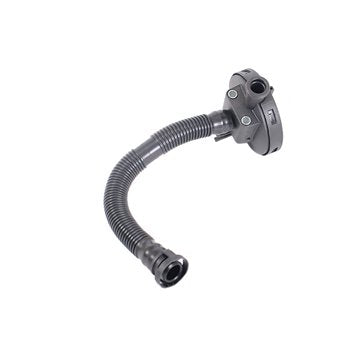Avoid operational issues with a well-tuned clp engine.
Avoid operational issues with a well-tuned clp engine.
Blog Article
How a Clp Engine Can Boost Effectiveness in Numerous Industries
The arrival of CLP engines marks a substantial shift in operational performance across numerous sectors, driven by their capacity to optimize fuel intake and reduce downtime. Industries such as production and logistics stand to obtain considerably from their durable design and constant power result, which promise to enhance operations and improve performance. As companies progressively focus on sustainability alongside effectiveness, the duty of CLP engines becomes much more vital. What remains to be seen is just how these advancements will form the future landscape of commercial procedures and their influence on broader economic patterns (clp engine).
Summary of CLP Engines
CLP engines, or Continuous Fluid Propellant engines, stand for a substantial advancement in propulsion innovation, specifically for room applications. These engines make use of a continual feed system that permits the continual expulsion of propellant, leading to boosted performance and performance contrasted to typical solid or hybrid propulsion systems. By maintaining a consistent flow of fluid propellant, CLP engines can accomplish more specific thrust control, which is essential for maneuvering spacecraft in numerous mission circumstances.
The style of CLP engines integrates advanced products and innovative gas administration systems. clp engine. This causes minimized weight and raised dependability, essential aspects for long-duration area objectives. The continual operation minimizes the danger of combustion instability, a common difficulty in traditional rocket engines.

Benefits in Production
The production of Continual Fluid Propellant (CLP) engines provides a number of significant advantages that improve both efficiency and cost-effectiveness. One of the key benefits is the structured manufacturing process, which decreases the complexity connected with traditional propulsion systems. By making use of fluid propellant, makers can attain better precision in engine performance, leading to maximized power output and reduced waste.
In addition, CLP engines promote a greater level of modularity, permitting much easier integration right into different manufacturing lines. This adaptability can significantly decrease lead times and enhance overall operational adaptability. The use of CLP technology additionally has a tendency to reduce the need for considerable maintenance due to less relocating components, which converts into lowered downtime and functional costs.

Applications in Logistics
Leveraging Constant Fluid Propellant (CLP) engines in logistics supplies substantial benefits in functional performance and integrity. These engines give a durable remedy for numerous transport needs, making it possible for the seamless motion of goods across vast distances. The inherent design of CLP engines allows for regular power output, which converts right into smoother and extra foreseeable transportation schedules.
One of the vital applications of CLP engines in logistics remains in durable freight transportation, where they can drive both ground and aerial automobiles. Their ability to maintain high efficiency under differing load conditions makes certain that distribution timelines are satisfied, thus enhancing client fulfillment. Furthermore, CLP engines can be integrated right into automated logistics systems, assisting in real-time tracking and optimizing course planning.
Moreover, the resilience of CLP engines reduces maintenance downtime, allowing logistics firms to optimize their operational capacities. This is especially advantageous in warehousing procedures, where effectiveness in dealing with and transferring items is essential. As logistics remains to progress, the integration of CLP engines stands for a forward-thinking method that not just improves efficiency but additionally supports the sector's growing demands for integrity and speed.
Effect On Energy Performance
How do Continual Liquid Propellant (CLP) engines improve energy effectiveness in transport? CLP engines utilize a regular flow of liquid gas, optimizing combustion procedures and keeping a stable thrust result. This design lessens energy losses connected with traditional combustion engines, where gas delivery can differ and lead original site to ineffectiveness.
The continuous operation of CLP engines permits an extra efficient thermal cycle, leading to greater details impulse contrasted to conventional engines. clp engine. This equates to minimized gas usage for the very same amount of work done, substantially reducing functional prices throughout numerous transport sectors, including aviation and maritime industries
Furthermore, the capability of CLP engines to preserve ideal efficiency under differing tons problems minimizes the demand for constant velocity and deceleration, even more improving fuel efficiency. Improved energy efficiency not only adds to cost financial savings but also results in reduce greenhouse gas emissions, aligning with global sustainability goals.
Future Trends and Innovations
Arising advancements in Continual Fluid Propellant (CLP) engine modern technology go now guarantee to revolutionize the landscape of transportation performance and sustainability. As sectors pivot toward greener choices, CLP engines stand at the leading edge, integrating innovative products and layout techniques that improve performance while reducing environmental influence.
One of the most encouraging patterns is the adoption of hybrid systems that incorporate CLP engines with eco-friendly energy resources. This harmony can optimize gas usage and decrease emissions, straightening with worldwide sustainability objectives. Additionally, improvements in computational fluid characteristics (CFD) are assisting in the design of even more aerodynamically effective engines, leading to lowered drag and enhanced gas efficiency.
Additionally, the growth of wise surveillance systems is readied to boost operational performances. These systems leverage information analytics and IoT technology to enhance engine efficiency in real-time, guaranteeing that the engines run within their most efficient criteria.
As research remains to discover alternate propellant solutions-- such as biofuels and synthetic gas-- the future of CLP engines looks encouraging. By taking advantage of these innovations, markets can not just enhance their performance but likewise add significantly to a cleaner, much more lasting future in transport.
Conclusion
In verdict, CLP engines represent a considerable innovation in performance throughout numerous sectors. The assimilation of sophisticated right here materials and fewer moving components decreases maintenance requirements, while placement with sustainability objectives settings CLP engines as an essential innovation for the future.
Report this page